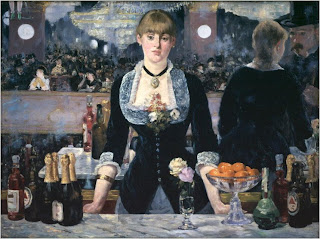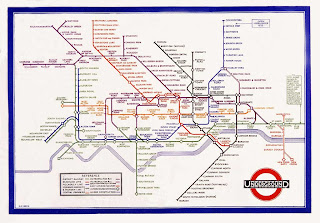To engage in current academic debates.
To compare this impact to that of the late 19century
Media thats works not through persuasion or impressions engagement and involvement
Sutherland 2001
Old media = back to late 19century
Compact and impact of new media and progress of colour printing
Radio
William Hesketh Lever
1851-1925 Lever bros
Rob wright - the begining in history of advertising
WCRS. 118, 118 and the futures bright the futures orange.
Bill Bernbeck 1911-1982
1st to combine copywriters and art directors
sunlight vision exhibition
Sunlight, lux to lynx
Soap, lever brothers
founders James Daray and William Hesketh Lever
Today Uni Lever, 900 brands, Persil, Sunsilk and comfort
'Ubiquitous brand, part of the average consumers, metal furniture'
(Lewis p57)
William Lever
George Cruikshank (etching)
all the world going to see great exhibition of 1851
Beginning of pre packaging
1860s cereal, figured how to print
Founded
-John and william Kellogg
-Henry j heinz
-Asa candler 1890s bottle coco cola
Soap sold in long
like shop - lush
The first
Lever
I was the first to advertise extensively a tablet of soap - directed at the higher class
Ads and colour printing
Newspapers
-advertising boom
-press owes much to advertising
-press indispensable for advertising
Posters
ethnological progress reproduction and colour printing
posters 1890s
technology enabled contemporary painting to be reproduced
Contempory art and advertising
The soap, means extensive use uses contempory paintings in their advertising in a case in point
(Lewis, 2008, p65)
Image used in sunlight and soap advertisement with a caption 'so clean'
'the new frovck 1889' william powell forth
Uses children, clean, rosy
'The wedding morning' - John Henry Frederick bacon
generational admirers
clock and cup changed to be sunlight soap
brand loyalty
'Colourful, innovative advertising was crucial to levers success'
Port sunlight museum, 2009
Medical, chocolate and soap manufacturers announced foremost advertisers
Levers achieves
'to convince people - didn't just want soap - needed it.'
Promotion boom - washing event competition
2x steamers, washer women, soap, large crowds and banquet
Royal endorsement from 1892
soap makers to the queen
1903
began wrapper scheme offering own soap and presents in return
Capture the children
'One method beloved of advertisers...was to capture the children'
Using images of upper class children - directed audience
Lever spent 2million in first 2 decades making soap - purchased Philadelphia soap
Art direction
Cross suggested plantol should depict tropical climates and express the care that is exercised in refining oils.
Advocate of forced labour
Palm oil main ingredient
Lever amassed and among innovates of advertising expertise
advocated truth in advertising is an asset falsehood in advertising is a liabitis
Salvation
'Many of his early advertising enphaside that sunlight soap would save women from drudgery'
Answer: washing day toil
solution: sunlight
Copy: a girl of 12 or 13 can do a large wash without being tired
ease a repeated theme
sunlight soap and how to use it spoke directly to working class housewives
-same strategies used today (eg mother and daughter)
-Improves life, leaving quality time for romance
British imperial museum
-civilise
-No commodity aided more in this soap
- Mc Clintock argues 'served to justify the imposition of alien cultural values'
creating customers
sanitary achievement, drains sewage and soap
Pursuade each customer of his/her hygiene problems
the lynx effect - high feeling
Psychology
The psychology of advertising 1908 , US, Walter Dillscott
Edway Berneys, nephew off...
Discrepanny theory - between self and ideal image of self
Lever bros Lux 'soft youthful lovely femine hands' and celebrity endorsements
America soap operas (radio)
Link between art and advertising
P+G aimed at children, sculpture event - carve out of soap
Crities of admass culture
Boom in consumption
Advocates of admass
economic liberals
Celebrate unfettered agony of the consumers individual
good trade relations between countries reduced conflict
Leverhume speech NY 1923
Back to the future
New media model
more targeted
More personalised
Shift - sturgeon 2008
Viral ads
Distinction between old and new
Voluntary viewing - PC
Forced viewing - TV or print
Definition - unpaid peer to peer communication of content
New coms model
Old - transmission
New - cybernetic
-Engage with audience via computer, cell phones
- a new exciting ways about advertising
Trevor Beatie - Ideas
-Internet
-Enables lots of small ideas to circulate
-The combination of a 'trillion, little ideas is in itself is the biggest idea there is, i think we are at the most interesting point of communications history ever'
Digital media
Convergence of media opens up opportunities for creativity.
Viewer generated content
Case study 'coke menthos'
Viewer generated advertisement
Audienced actively managing media culture
Creating dialog
Paul burns 'talking with audience'
You tube - 'old spice'
- interacts with audience
-Responds to tweets
Oasis 'dig out your soul'
-Virals promoted new album
Youtube ad of the year award
-Embrace life'
Always wear a seat belt
The third screen
Mobile phones will soon become the greatest tool for persuasion
-Fogg
The heiros factor
Presenting desired message at opportune moment
-location
-routine
-goals
My own summary of the impact of new media on advertising
Personally I believe there has been a massive impact of advertising through the use of new media, techniques and solutions, there is such a variation now, its hard to depict categories for each. Voluntary viewing with in websites like youtube gives a whole new outlook on advertising; It can be emotionally stimulating , an example shown in the above video. An empathy method which perhaps can not be done with such an impact through just print. My favourite method, in all honesty is viral ads. The way in which millions will see a video, which begins with just one person sharing it with another, for this to be passed on to several, to dozens to hundreds and so on. Target audience is no longer an issue in which television advertisements have a problem with. If you don't watch a particular channel, the chances of you seeing an advert on there will be slim. But generation own a computer and billions use the internet daily, and for those who don't, word of the mouth will likely get around to them. My own personal example of this is my grandparents. Neither of them use the internet nor own a computer, but when they visit I may show them a video within a website like youtube. It's as simple as that.
Advertising is becoming a very powerful tool, even more so with the range in which one can advertise itself. Peer to peer sharing is a method in which the video maker had to intent of advertising the product in use. "coca cola and menthol" is just one example, see below.
In a lecture we were told of the effect this viral had on sales figures which were astonishing.































